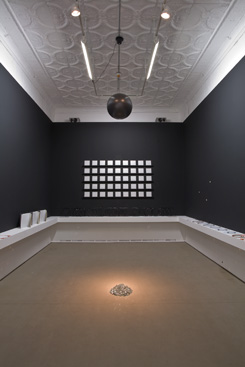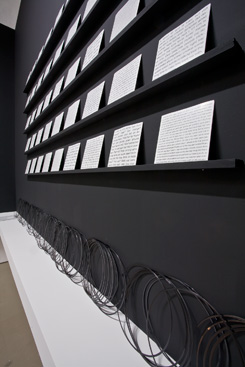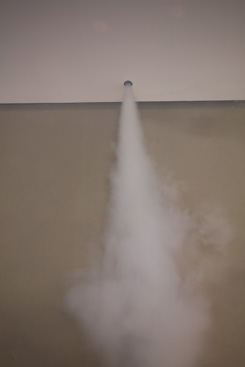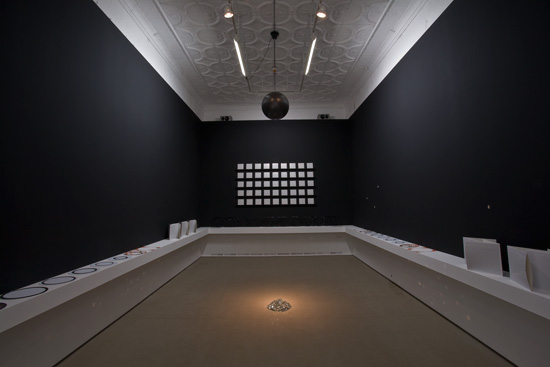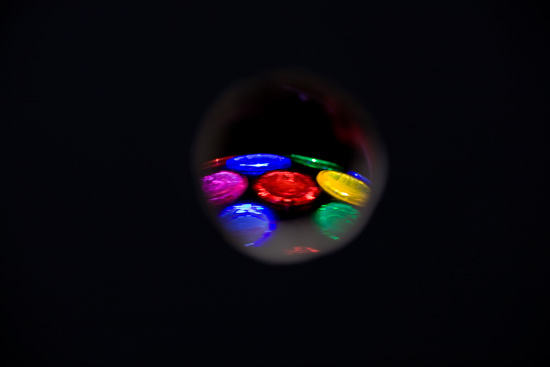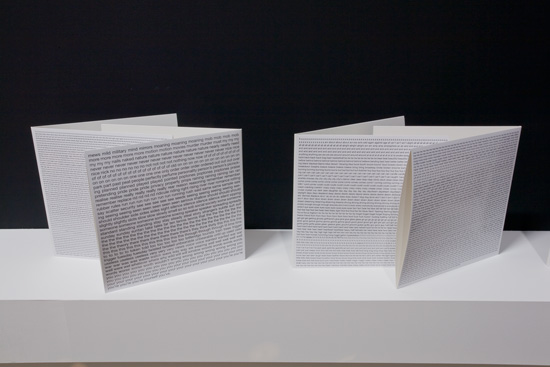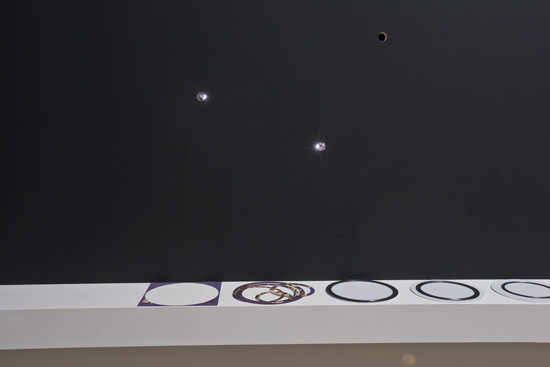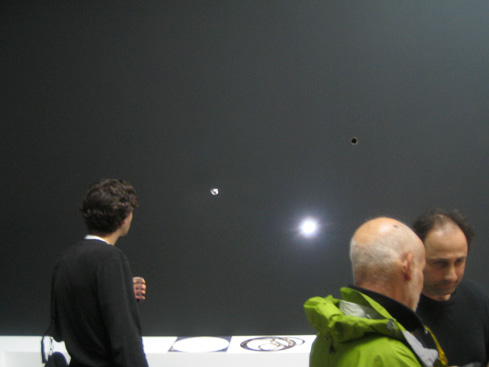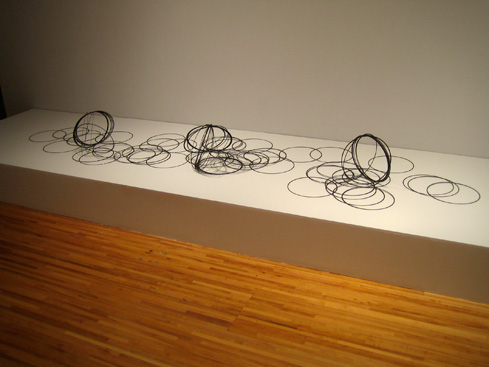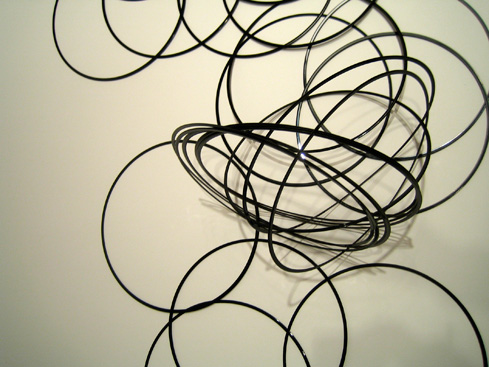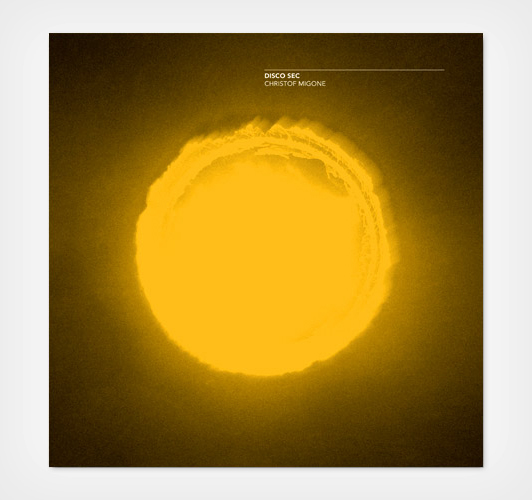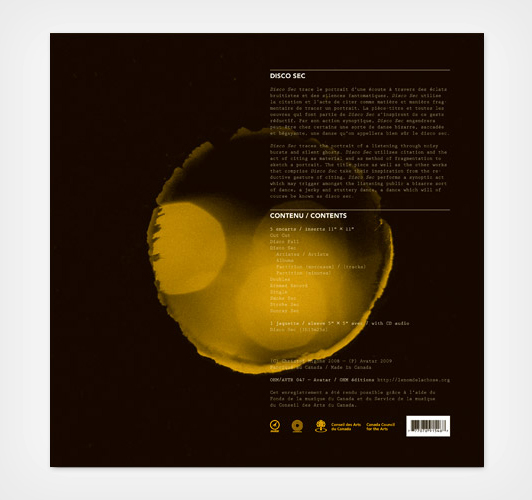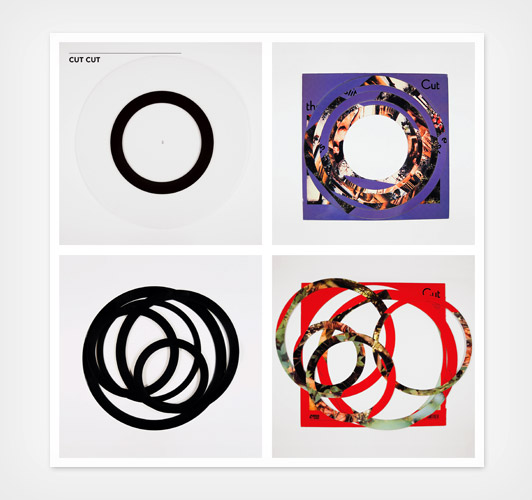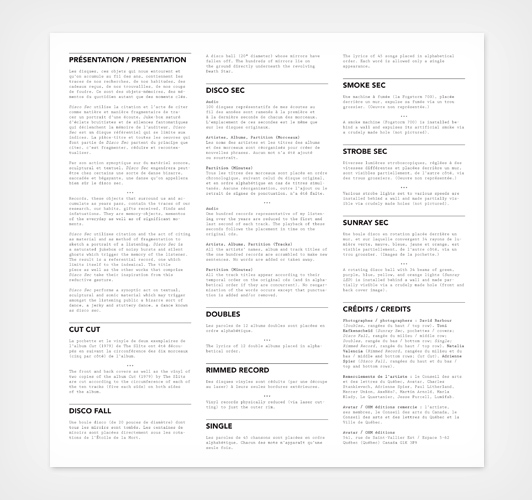Disco Sec
(2008)
Je ne dis plus je cite toujours.
– Samuel Beckett, Comment c’est
La citation travaille, altère toujours, aussitôt, aussi sec, ce qu’elle paraît reproduire.
– Jacques Derrida, Limited Inc.
Disco Sec mixes discophilia with a synoptic obsession. A series of works using the principle of citation on a collection of recordings which is representative of the artist’s listening over the years (so it functions as a form of portraiture). A reduced record collection. An abbreviated discotheque.
Les objets qui nous entourent, les choses qu’on accumule au fil des ans contiennent les traces de nos recherches, habitudes, études, cadeaux et dons reçus, trouvailles, coups de foudre. Ce sont des objets-mémoires, des mémentos du quotidien autant que des moments clés. Michel de Certeau parle de « la citation-réminiscence qui trace dans le langage le retour insolite et fragmentaire », ensuite il ajoute que « la citation conjugue des effets d’interprétation (elle permet de produire du texte) à des effets d’altération (elle in-quiète le texte) ».
Disco Sec s’agit d’un portrait de mon écoute à travers ma discothèque.
Disco Sec propose la réduction d’une discothèque à travers des stratégies diverses. L’oeuvre sonore éponyme se concentre sur la première et la dernière seconde de chaque pièce sur un cd. Ce geste place l’emphase sur l’élan du début et la finalité de la fin. Disco Sec est un juke box saturé de déclencheurs de mémoire, de secondes isolées et de silences qui se replie sur la mémoire de l’auditeur pour se faire entendre. C’est un disque référentiel, qui se limite aux indices, et qui met en évidence la subjectivité du temps.
Une citation contient une sorte de circularité, il existe un va-et-vient entre son contexte original et son nouvel emplacement, il y a une double temporalité et une double localité. Disco Sec se sert de ces doublures du référentiel pour développer sa structure.
Disco Sec est un projet synoptique qui peut être engendrera au sein du public une sorte de danse bizarre, saccadée et bégayante, une danse qu’on appellera le disco sec.
Scroll down for REVIEWS.
Disco Sec publication consists of an LP cover, 5 x 11″ x 11″ full-color inserts, plus an audio CD. Published by Avatar/OHM éditions. Graphic design by Jean-François Proulx of Balistique.
LP sleeve + 6 11″x11″ inserts + drilled holes + MDF board + PDF + CD + AIFF + MP3 (320kbps) – Cdn$45
PDF + MP3 (320kbps) – Free
Images (order)
– Mercer Union install
– Mercer Union opening
– AxeNéo7 install
– Publication
Presentation History
– 2010 Montréal (installation, Optica)
– 2009 Québec (publication, Ohm éditions)
– 2009 Gatineau (installation, AxeNéo7)
– 2008 Toronto (installation, Mercer Union)
List of works in the exhibition
Cut Cut (2008)
The front and back covers as well as the vinyl of two copies of the Slit’s first album ‘Cut’ (1979) are cut according to the circumference of each track on both sides of the album (there are five tracks per side).
Disco Fall (2008)
A disco ball (20″ diameter) is stripped of its mirrors. For the installation, the hundreds of mirrors lie on the ground directly underneath the revolving Death Star.
Disco Sec (2004-2008)
AUDIO: One hundred records representative of my listening over the years are reduced to the first and last second of each track. The playback of these seconds follows the placement in time on the original cds. Listen to audio via player above. TEXT: The artists’ names, album and track titles are scrambled to make new sentences. The track titles appearing in the TIMES section are left as is, they are in order of appearance on their respective CD. See full content below.
Doubles (2008)
The lyrics of 12 double albums placed in alphabetical order.
Rimmed Record (2008)
Vinyl records physically reduced to the outer rim, packaged in silk-screened recycled record covers. Playable at your own risk. Edition of 100.
Second Second (2008)
The second second of the second track of two hundred recordings. The playback of these seconds follows the placement in time of the original.
Single (2008)
The lyrics of 45 songs are placed in alphabetical order and each word is allowed only a single appearance.
Smoke Sec (2008)
Strobe Sec (2008)
Sunray Sec (2008)




